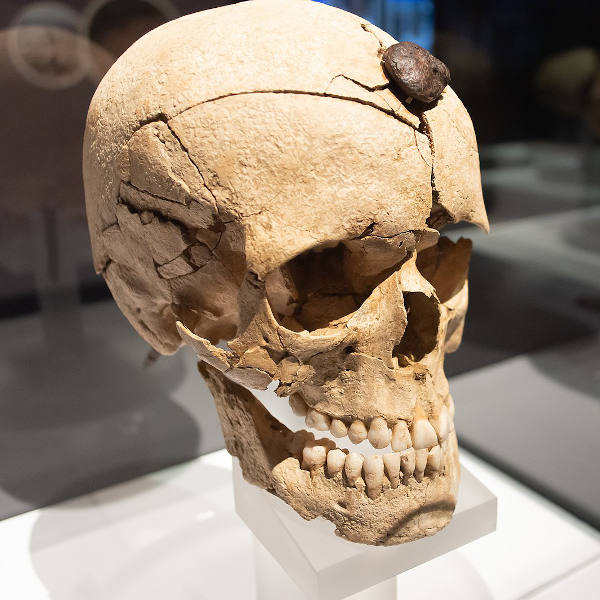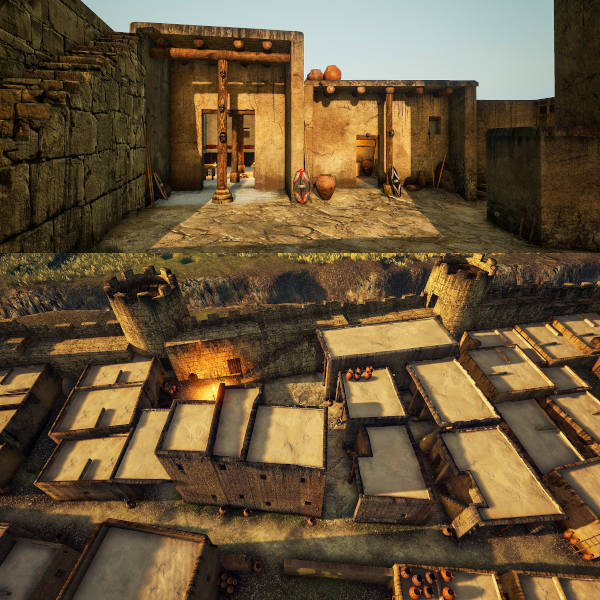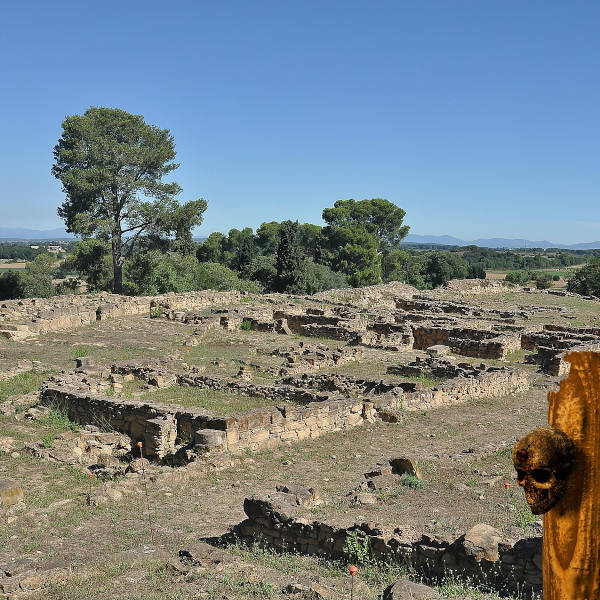DNA spotlight
Severed Heads of Ullastret

In the Iron Age Iberian town of Ullastret the heads of defeated enemies would be prepared and publically displayed alongside seized weapons. This ritual custom reaffirmed the powers of the leaders. It was common in Celtic cultures that head trophies were hung from the backs of horses or displayed in front of houses of victorious warriors. Pine tree resin has been found with these remains showing signs of heating to a high temperature. This indicates an embalming process was used to preserve the heads as long as possible. It is in fact theorized that the embalming process would be repeated over time as resin could be poured over many times. Shown here is one of the heads discovered in Ullastret.

Ullastret is a town in the Baix Emporda region of Catalonia and was home to the largest Iberian settlement in Catalonia dating to around 550 BC. With its towering walls, the city was the capital of the region and was the center of trade with the nearby Greek city of Empuries. The inhabitants were the Indiketes, an ancient Iberian people who spoke the Iberian language. They minted their own coins which bore the inscription undikesken which is a self-reference to their ethnic name. in 218 BC they were conquered by Rome during the Roman conquest of Hispania. They rebelled in 195 BC only to be crushed by the consul Marcus Porcious Cato.

The street shown is the main thoroughfare through the city leading to the town center. Severed heads were found here on this street and in the courtyard of the large two-story aristocratic dwelling adjacent to the town walls - note that other houses were single-story. This evidences the display of power of the ruling family. The surrounding walls are 930 meters long and the defensive towers approximately 28 meters apart. An enormous defensive trench runs parallel to the walls.

There were actually two Iberian villages in the Ullastret complex, but only the ruins of Puig de Sant Andreu are visitable today. This corresponds to the last stage of the town's occupation by the Indiketes in the 3rd century BC. The aristocratic house can be visited including where the remains of 15 skulls were discovered starting in 2012. Visitors to the site can enter the rectangular buildings which once had wood beam roofs covered with branches and mud. Past the cobbled streets lies a complex water collection system based off cisterns carved out of rock which mimic the same systems found in the nearby Greek colony. A large part of the defensive wall exists today as well as temples, grain solos and public spaces.
Sample: Ullastret Iberian Head Girona
- Sample ID: I3323
- Year: 280 BC
- Sex: Male
- Location: 42.0289,3.1874
Sample: Ullastret Ligurian Head Girona
- Sample ID: I3324
- Year: 280 BC
- Sex: Male
- Location: 42.0289,3.1874
Sample: Ullastret Germanic Head Girona
- Sample ID: I3326
- Year: 225 BC
- Sex: Male
- Location: 42.0289,3.1874
Sample: Ullastret Indigetes Iberian Head Girona
- Sample ID: I3327
- Year: 225 BC
- Sex: Male
- Location: 42.0067,3.1001
